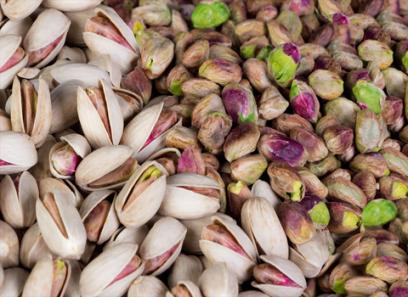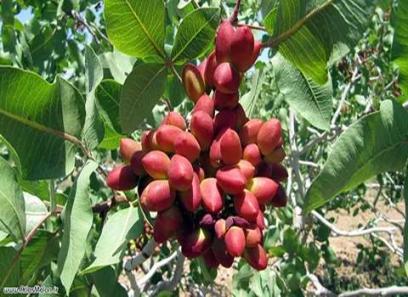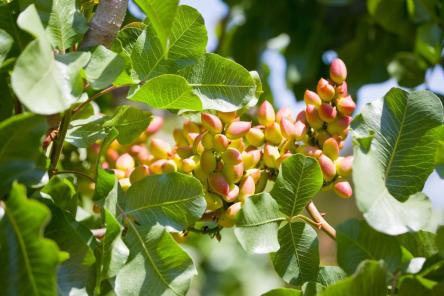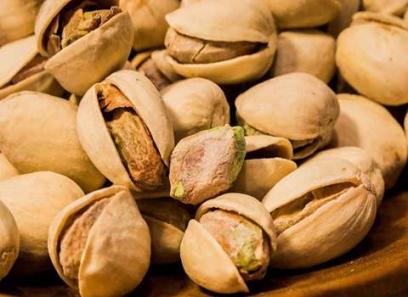Title: Understanding the Purchase and Pricing Factors of Pistachio Trees in Different Climates Introduction Pistachio trees, known for their delicious nuts and attractive aesthetic appeal, are gaining popularity among farmers and consumers alike. However, the purchase and pricing of pistachio trees can vary based on the specific climatic needs of these trees. In this article, we explore the crucial factors that influence the cost of pistachio trees across different climatic regions without specific references to sources or authors. 1. Climate Suitability One of the foremost considerations when purchasing pistachio trees is the climate of the intended planting location.
.
 Pistachio trees thrive in regions with long, hot summers and dry conditions, as they require a certain level of heat and sunshine for proper growth and nut production. Areas with moderate, Mediterranean-like climates tend to be most suitable, allowing the trees to benefit from a well-defined winter dormancy period. 2. Chilling Hours Chilling hours play a significant role in determining the price of pistachio trees. These are the cumulative number of hours when the temperature remains below a certain threshold during winter. Pistachio trees require a specific number of chilling hours to encourage bud dormancy and ensure the successful onset of spring growth. In regions with insufficient chilling hours, pistachio trees may struggle to bloom and set fruit.
Pistachio trees thrive in regions with long, hot summers and dry conditions, as they require a certain level of heat and sunshine for proper growth and nut production. Areas with moderate, Mediterranean-like climates tend to be most suitable, allowing the trees to benefit from a well-defined winter dormancy period. 2. Chilling Hours Chilling hours play a significant role in determining the price of pistachio trees. These are the cumulative number of hours when the temperature remains below a certain threshold during winter. Pistachio trees require a specific number of chilling hours to encourage bud dormancy and ensure the successful onset of spring growth. In regions with insufficient chilling hours, pistachio trees may struggle to bloom and set fruit.
..
 Consequently, pistachio trees adapted to specific chilling requirements may be higher in price due to their increased reliability and productivity. 3. Cold Hardiness Pistachio trees are generally hardy and can withstand mild winter temperatures. However, their cold tolerance can vary, with certain cultivars being better suited for colder climates than others. Trees bred for increased cold hardiness can withstand frost and extended periods of low temperatures, providing farmers in colder regions with the opportunity to grow pistachios successfully.
Consequently, pistachio trees adapted to specific chilling requirements may be higher in price due to their increased reliability and productivity. 3. Cold Hardiness Pistachio trees are generally hardy and can withstand mild winter temperatures. However, their cold tolerance can vary, with certain cultivars being better suited for colder climates than others. Trees bred for increased cold hardiness can withstand frost and extended periods of low temperatures, providing farmers in colder regions with the opportunity to grow pistachios successfully.
…
 These cold-hardy cultivars might often come at a premium price due to the extensive research and development required to improve their adaptation. 4. Drought Resistance Pistachio trees exhibit excellent drought tolerance, making them attractive for regions prone to water scarcity. As water resources become increasingly limited, the ability of pistachio trees to withstand extended periods of dry conditions makes them a viable option for agricultural productivity. Pricier varieties are often bred to possess enhanced drought resistance, allowing growers in arid climates to maintain high-quality pistachio cultivation even with limited water resources. 5. Disease Resistance Certain pests and diseases can pose challenges to pistachio trees and impact their overall health and productivity. Thus, pistachio cultivars bred to exhibit resistance to specific diseases such as Verticillium wilt or root rot might command higher prices. Disease-resistant cultivars can help farmers minimize crop losses, reduce the need for chemical treatments, and increase the long-term sustainability of pistachio orchards. Conclusion The purchase and pricing of pistachio trees are influenced by various factors related to climate suitability, chilling hours, cold hardiness, drought resistance, and disease resistance. While the exact prices may vary based on specific market conditions, it is critical for farmers to choose tree varieties that align with their local climate conditions for optimal productivity and profitability. By considering these influential factors and selecting the right varieties, farmers can embark on successful pistachio cultivation projects across different climates.To further ensure the success of their pistachio cultivation projects, farmers should also consider additional factors such as soil quality, irrigation systems, and proper orchard management practices. Soil quality is paramount for pistachio tree growth as they prefer well-draining soils with a pH range between 7 and 8. Conducting soil tests and analyzing nutrient content can help farmers determine if any amendments or fertilizers are needed to create an ideal growing environment for pistachio trees. The establishment of an efficient irrigation system is crucial, particularly in regions with limited water availability. Pistachio trees require regular watering, especially during the summer months. Implementing advanced irrigation methods like drip irrigation or the use of moisture sensors can ensure precise water application and prevent water wastage. Applying proper orchard management practices like pruning, pest control, and weed management are essential for maintaining healthy and productive pistachio trees. Pruning helps shape the trees, enhances sunlight penetration, and facilitates air circulation, reducing the risk of disease and improving nut quality. Regular monitoring and implementing integrated pest management strategies can minimize pest damage and reduce the need for chemical interventions. Effective weed management prevents weed competition and preserves soil moisture for pistachio tree uptake. To ensure the longevity and profitability of their pistachio orchards, farmers must consider the initial purchase price in conjunction with these ongoing management costs. While higher-priced pistachio tree varieties might initially present a higher investment, their suitability for the specific climate and resistance to diseases and drought can lead to higher yields, greater resilience, and improved returns in the long run. In conclusion, understanding the purchase and pricing factors of pistachio trees in different climates is essential for farmers looking to venture into pistachio cultivation. By considering climate suitability, chilling hours, cold hardiness, drought resistance, disease resistance, as well as soil quality, irrigation systems, and orchard management practices, farmers can make informed decisions that will lead to successful and profitable pistachio cultivation projects. With proper planning and care, the cultivation of pistachio trees can provide farmers with a lucrative and sustainable business opportunity.
These cold-hardy cultivars might often come at a premium price due to the extensive research and development required to improve their adaptation. 4. Drought Resistance Pistachio trees exhibit excellent drought tolerance, making them attractive for regions prone to water scarcity. As water resources become increasingly limited, the ability of pistachio trees to withstand extended periods of dry conditions makes them a viable option for agricultural productivity. Pricier varieties are often bred to possess enhanced drought resistance, allowing growers in arid climates to maintain high-quality pistachio cultivation even with limited water resources. 5. Disease Resistance Certain pests and diseases can pose challenges to pistachio trees and impact their overall health and productivity. Thus, pistachio cultivars bred to exhibit resistance to specific diseases such as Verticillium wilt or root rot might command higher prices. Disease-resistant cultivars can help farmers minimize crop losses, reduce the need for chemical treatments, and increase the long-term sustainability of pistachio orchards. Conclusion The purchase and pricing of pistachio trees are influenced by various factors related to climate suitability, chilling hours, cold hardiness, drought resistance, and disease resistance. While the exact prices may vary based on specific market conditions, it is critical for farmers to choose tree varieties that align with their local climate conditions for optimal productivity and profitability. By considering these influential factors and selecting the right varieties, farmers can embark on successful pistachio cultivation projects across different climates.To further ensure the success of their pistachio cultivation projects, farmers should also consider additional factors such as soil quality, irrigation systems, and proper orchard management practices. Soil quality is paramount for pistachio tree growth as they prefer well-draining soils with a pH range between 7 and 8. Conducting soil tests and analyzing nutrient content can help farmers determine if any amendments or fertilizers are needed to create an ideal growing environment for pistachio trees. The establishment of an efficient irrigation system is crucial, particularly in regions with limited water availability. Pistachio trees require regular watering, especially during the summer months. Implementing advanced irrigation methods like drip irrigation or the use of moisture sensors can ensure precise water application and prevent water wastage. Applying proper orchard management practices like pruning, pest control, and weed management are essential for maintaining healthy and productive pistachio trees. Pruning helps shape the trees, enhances sunlight penetration, and facilitates air circulation, reducing the risk of disease and improving nut quality. Regular monitoring and implementing integrated pest management strategies can minimize pest damage and reduce the need for chemical interventions. Effective weed management prevents weed competition and preserves soil moisture for pistachio tree uptake. To ensure the longevity and profitability of their pistachio orchards, farmers must consider the initial purchase price in conjunction with these ongoing management costs. While higher-priced pistachio tree varieties might initially present a higher investment, their suitability for the specific climate and resistance to diseases and drought can lead to higher yields, greater resilience, and improved returns in the long run. In conclusion, understanding the purchase and pricing factors of pistachio trees in different climates is essential for farmers looking to venture into pistachio cultivation. By considering climate suitability, chilling hours, cold hardiness, drought resistance, disease resistance, as well as soil quality, irrigation systems, and orchard management practices, farmers can make informed decisions that will lead to successful and profitable pistachio cultivation projects. With proper planning and care, the cultivation of pistachio trees can provide farmers with a lucrative and sustainable business opportunity.




